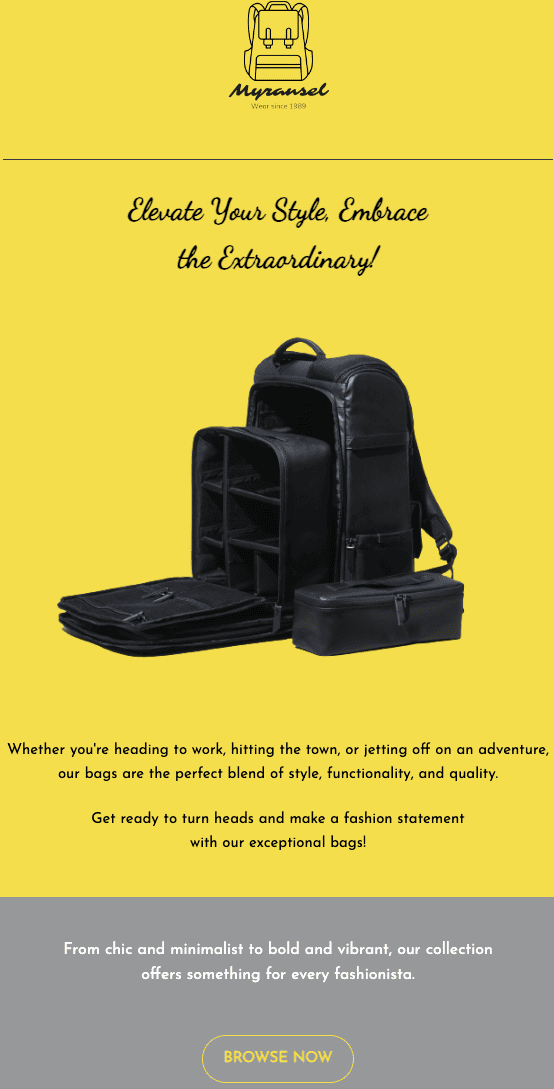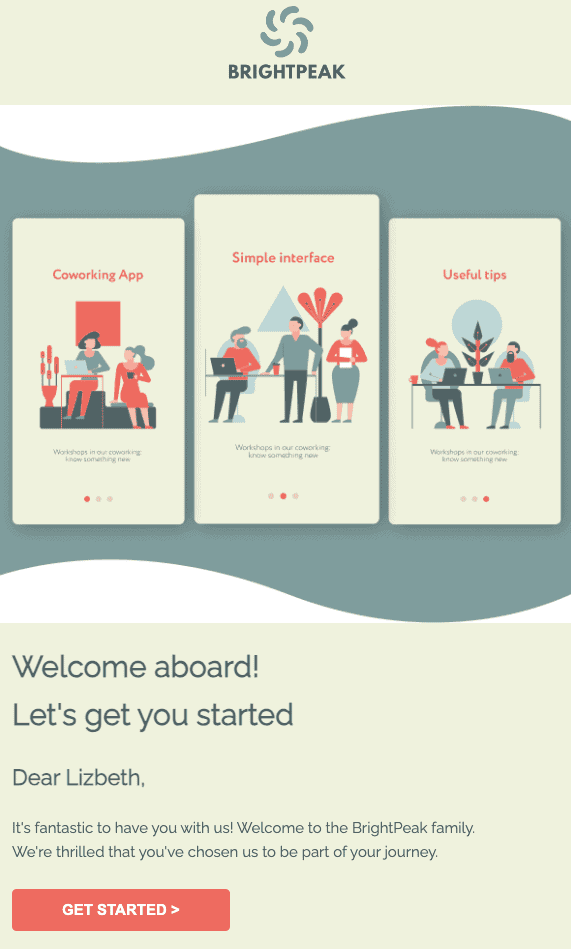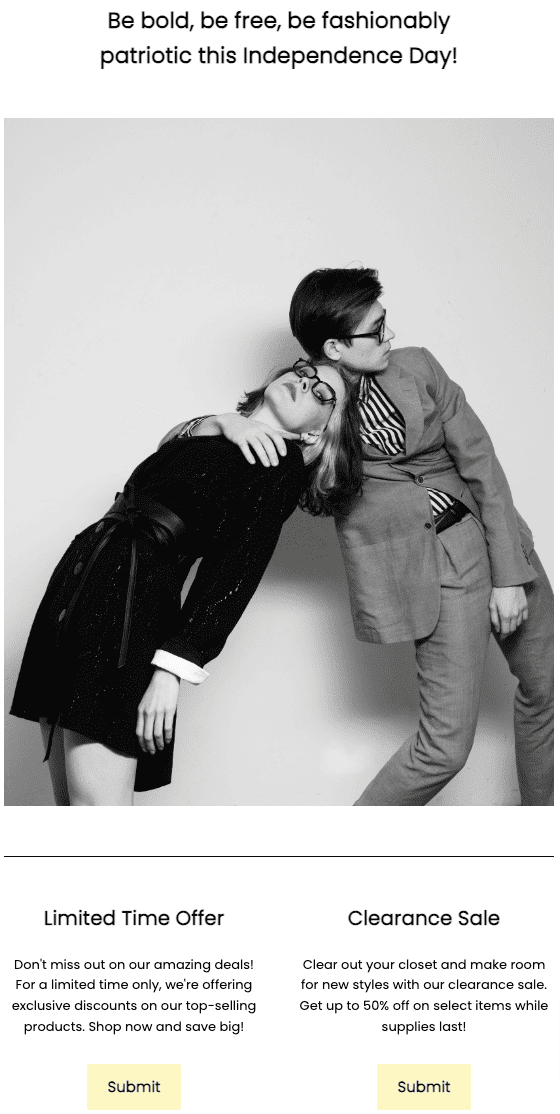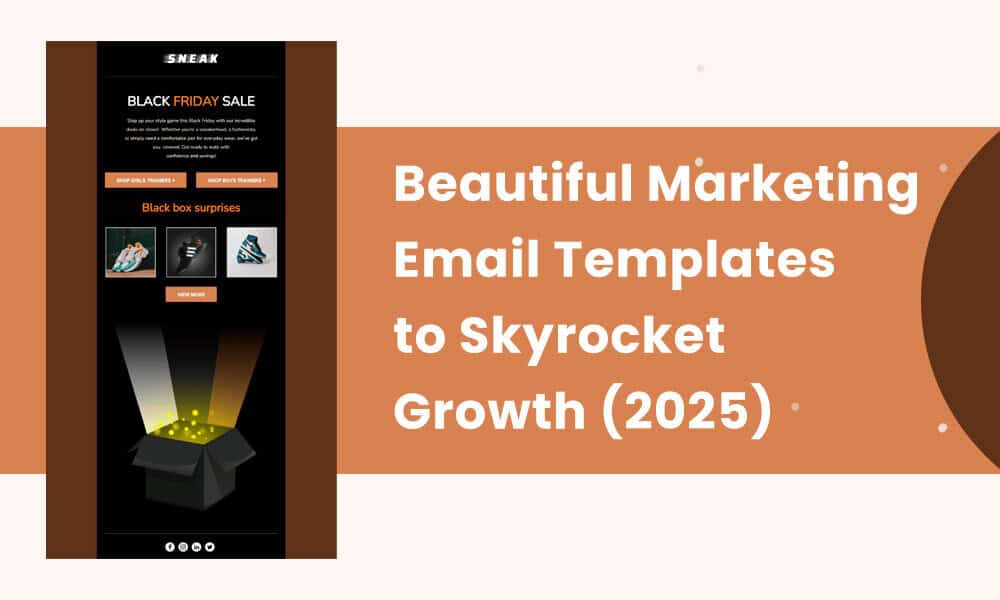Why use email templates for marketing? They are force multipliers. They help you scale outreach while saving time and money. Marketing email templates provide a customizable framework for engaging readers, generating leads, and driving conversions. If you struggle with personalizing your messaging to specific pain points, templates can help.
Industry-specific marketing email templates help build authority and improve response rates. However, getting elements like the text, visuals, and layout and integrating them into your marketing flows can feel like a challenge. No worries!
In this blog post, we’ll review the nitty-gritty of setting up marketing email templates and getting the most out of them. We’ll discuss:
- How to choose the proper marketing email templates
- How to customize and personalize marketing email templates
- Best practices for marketing email template design
- How to integrate email templates into your marketing campaigns
Let’s get started.
Table of Contents
How to Choose the Right Marketing Email Templates
You must engage your audience at each stage of their journey to get the most out of their email marketing spend. You should have a template for each type of campaign.
Newsletters
Whether you run a weekly or monthly newsletter, a good newsletter template should have consistent branding- logo, brand colors, and fonts – so readers can associate it with your brand. A clean, single-column design works best.
Use engaging subject lines and headers to increase engagement. To break up large blocks of text, include images and infographics. Look for a newsletter template with customizable headers and footers and a clean layout with adequate whitespace.
This will allow you to quickly update social media links, unsubscribe buttons, and format and style text and images.
Promotional emails
These emails are generally short and punchy. They focus on product images, fonts, and colors to hold the reader’s attention. The layout should guide the reader’s eyes to the CTA, while the copy must be action-oriented.
The right promotional email template would have dynamic content targeting specific audience segments and multiple placement options for images, videos, and banners.
Mobile responsiveness is a must for all elements to render correctly. If you plan to include multiple CTAs, check if the template can be split into two or more sections.

Transactional emails
Ideally, these emails should have an ‘inverted pyramid’ structure with the most critical information at the top. For example, purchased item details, tracking number, shipping updates, etc. Your template should cater to visual elements like logos, banners, and CTA buttons.
It should also provide an opportunity to promote related products via carousels, custom fields, etc.
Welcome emails
Think of welcome emails as the curtain raiser for a subscriber’s journey with your brand. A good welcome email should have warm colors, bold text, and a prominent hero image, preferably featuring people. A minimalistic layout with plenty of white usually works best.
Your template should have customizable CTA buttons and a footer section for social icons, navigation links, etc. When choosing marketing email templates, pay equal attention to how well the template aligns with your brand guidelines.

For example, ask yourself if the colors and design elements match your branding, whether it’s easy to use, etc.
EngageBay offers a range of customizable templates for different marketing flows. It comes with a drag-and-drop builder for easy customization and a full suite of A/B testing, scheduling, and reporting features for managing entire email marketing campaigns from one place.
Enhance Your Email Marketing
Drive results and boost engagement with our beautifully crafted, easy-to-customize marketing email templates! Just update your brand’s images, headings, and CTAs, and send high-impact, conversion-focused emails in minutes!
How Do I Make My Marketing Email Template Stand Out?
If you’ve been struggling with low email open rates and engagement, customizing and personalizing the following elements in your template can help:
Subject line
Remember to personalize the subject based on the type of email and the target audience. For example, if you sent a cart recovery email, the subject line could be ‘You left something behind.’ Use the pre-header text to support your subject line and give readers more reasons to open your email.
Email body
For promotional emails, write a short but practical introduction explaining the reason for emailing. Use bullet points to make it easy for readers to scan through the body. For newsletters, use a simple layout and provide plenty of white space.
Include interactive elements like polls and quizzes. This will break up large blocks of text and improve readability.
CTA
For the reader to take action, the CTA button must be visible. The text should be clear, action-oriented, and enclosed in a prominent CTA button with a high-contrast color. Create urgency by appealing to scarcity (‘limited-time offer’) or provide social proof (‘Join our community of 10,000 subscribers’).
Signature
Depending on your branding, you can either sign your emails with your first name or first and last name. However, make a point to include a headshot with your headshot.
It makes your brand more human and helps build trust. You can add videos, animated content, and social media links, but A/B test to make sure they render correctly.
5 Awesome Promotional Email Examples for Top Brands
Design Best Practices for Marketing Email Templates
Do you design your emails around your content or the other way around? Either way, you must keep a few best practices in mind.
Visual hierarchy
Research shows that readers generally follow two distinct patterns, Z or F, when scanning through written material. The key is to place key elements of your email in line with these patterns to increase engagement. Use plenty of white space to improve readability.
Header design
This section includes the logo, tagline, and hero image at the top of your email or above the fold. Make sure there’s enough white space around the header. Putting additional text or links within the header can make it look cluttered.
Color and typography
The color palette you chose must align with your brand identity. Secondly, it should work well with dark and light modes. Research shows that 35% of people use dark modes on mobile devices. The typography or font type must match the colors used and look professional.
While sticking to a standard font type across channels is important, you can adjust for size, spacing, and readability.
Headings
Headings are a great way to break the monotony and direct attention to key parts of an email. If you’re sending a promotional email, use words that match the reader’s search intent. Keep your headings short and punchy- no more than 4-5 words and focus on benefits rather than features.
Product placement
Professionally shot product images placed prominently can instantly engage readers and drive sales. This can be crucial for abandoned cart emails. If you want to promote multiple products, consider using contrasting backgrounds to split your email into two distinct sections visually.
However, be sure to A/B test different placements for visibility and completeness before sending
With the right email marketing tool, designing attractive emails is easy. EngageBay, for example, offers a choice of templates with drag-and-drop customization. You can easily add or update elements like banners, images, and dynamic content.
Thanks to built-in A/B testing and preview features, you can enhance the effectiveness of your email messages across campaigns.
Promotional Email: How to Write Emails That Convert
Examples of Marketing Email Templates to Inspire Your Next Campaign
Here are a few email campaign examples you can take inspiration from:
Promotional email template: Magic Mind

Magic Mind is a brain supplement that improves focus and concentration. Notice how the brand uses high-quality product photos to introduce the product and breaks down the features using witty copy. Using two different fonts is generally considered a no-no.
This example creates a nice contrast and draws attention to the product benefits. The classic black CTA button stands out against the background. In the second section, the email goes into greater detail, using an image of a critical ingredient to trigger the purchase pulse.
A second CTA may be confusing to some readers. However, it does reduce the need for scrolling and could increase CTR for the brand. The entire footer section is devoted to just three links, providing social proof through testimonials and FAQs for those last-minute questions.
Click to Cart — The Art of Crafting Irresistible eCommerce Promotional Emails
Email Automation and Workflow Integrations
Wouldn’t it be great if you never had to manually send a welcome email again? Automated email workflows allow you to set specific triggers or rules and send emails at scale.
Let’s understand triggers and workflows in detail:
- Triggers: These could be related to online activity like email sign-ups or calendar events like birthdays, etc.
- Workflows: Workflows are a series of emails you can set up to send based on specific triggers. The trigger is the starting point for the workflow.
For example, a customer abandoning a cart can be defined as a trigger for a recovery sequence with three different emails being sent at defined intervals: reminder email with a discount code within 1 hour of the event, a follow-up email highlighting similar products, and a final email with a limited time discount.
Effective Newsletter Email Templates for Small Businesses in 2024
How to Make Your Own Email Templates
Let’s say you want to create templates for your welcome email workflow. If you’re using an email automation tool, you could either use a pre-built template or create one from scratch using a drag-and-drop builder. You can code one using a built-in HTML editor if you need something unique.
Once done, just save the template; it should appear in your menu options list. From there, you can add it to your welcome email sequence and specify a trigger action like email sign-up or contact form submission.
EngageBay allows you to create advanced workflows with multiple triggers or conditions. These include routine marketing activities like managing contact lists, lead scoring, scheduling emails, etc.

Read also: Engaging Sales Email Templates to Attract Your Audience
How to Analyze and Optimize Email Marketing Campaigns
How do you know if your email templates are working and which ones aren’t? Marketers can objectively measure the incremental impact of two or more campaigns with the help of analytics. However, you need to focus on the right metrics:
Click-through rate
This is the percentage of clicks compared to the total emails sent. A good CTR means your email campaign was successful.
Click-to-open rate
This is the metric for you if you want to measure the effectiveness of your subject lines and body content. CTOR shows the percentage of clicks per unique open. Unique open refers to the percentage of people who clicked on a link in an email after opening it, regardless of how many times they opened it.
Conversion rate
This metric shows the percentage of people who took the desired action after reading your email. You can define a conversion event based on your campaign goal. For example: email opt-in, making a purchase, or filling out a survey form/
Bounce rate
This is the percentage of emails that did not make it to the inbox. It indicates potential problems in email authentication.
Unsubscribe rate
The percentage of people hitting the unsubscribe button in your email. If you have a large number of unsubscribes, you could be segmenting your audience incorrectly or it’s possible they find your content irrelevant.
Average revenue per email sent
As the name suggests, this metric measures the revenue measures revenue generated by each email you send. The key is to focus on 3-4 metrics based on your business KPIs. This will help you avoid information overload and make the right decisions.
How to Craft Flawless Email Templates
Conclusion
Marketing email templates bridge the gap between marketing demand and team capacity. However, the ultimate goal is to create an engaging experience for customers. By syncing data from customer CRM profiles, EngageBay allows you to create targeted emails, track performance, and iterate effectively.
It’s not your average marketing email template builder, though. EnagageBay also helps you create seamless workflows, enabling your team to make the best use of their talent and resources.
FAQ
How do you make email templates for marketing?
To make a marketing email template, you can choose one of two options – use a pre-built template from your email marketing platform or code one of your own using an HTML template. However, using pre-built templates is quick and easy.
They can be customized with graphics and interactive elements via the platform’s drag-and-drop email builder. You do need coding knowledge to use HTML templates.
What are the four elements of a marketing email?
The four key elements of marketing email are:
- Subject line and pre-header: Most people decide whether to open an email based only on the subject line and pre-header.
- Header: This section is at the very top of the email. It carries branding elements like the logo and tagline.
- Body copy: This is the main text of the email, including the headline, images, text, and CTA.
- Footer: This is the bottom section of the email, which contains social links, unsubscribe links, navigation buttons, etc.
How do you write a marketing email example?
When writing a marketing email, the key elements to focus on are:
- Subject line: Go with a short subject line focusing on benefits and building urgency.
- Pre-header text: Condense the offer or main benefits in a single sentence.
- Hook: Frame a pain point or problem statement as an open-ended question.
- Body: Use short sentences, bullet points, and sub-headers to quickly explain the offer.
- CTA: Design CTA buttons in high-contrast colors with plenty of white space for maximum visibility.

